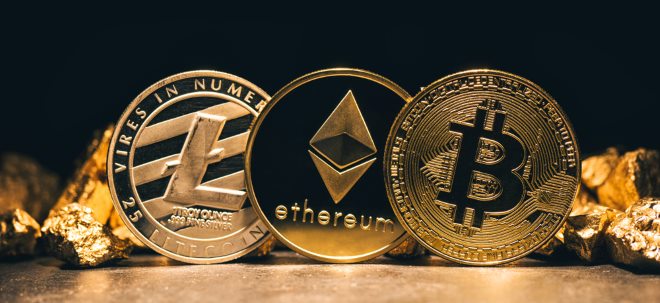Will Indonesia shut the nickel spigot to spur prices?
Werte in diesem Artikel
Indonesia’s clout in the global nickel market rivals OPEC’s in oil.The Southeast Asian nation — an archipelago of more than 17,000 islands straddling the Indian and Pacific oceans — holds the largest nickel reserves on the planet. It’s the world’s largest nickel producer and second-largest stainless-steel producer.Last year the country produced 63% of the world’s nickel, up from 28% in 2020, and that share could easily rise to 75% within the next three to five years, according to Jim Lennon, a London-based managing director of commodities at Australia’s Macquarie Group.“It’s the only place with the huge reserve base, the only place with available capital deployed by Chinese banks to finance projects,” Lennon said by videophone. “In the rest of the world, producers are struggling to get off the ground.”Between 2020 and 2024, Indonesia added 1.5 million tonnes of new supply to the market. Last year it churned out 2.25 million tonnes of nickel (finished and intermediates), a 16% year-on-year increase, weakening prices and triggering mine closures in other countries.“The nickel market has been in large oversupply for the last three years,” Lennon said. “Enormous growth in Indonesia has killed the nickel price.”Last year the annual average LME price for the silvery-white metal plunged 22% year-on-year from $21,492 per tonne to $16,812 per tonne. In early January, the price was down to $15,482 per tonne.BHP has nothing good to say about nickel pricesThe only other base metal that fell last year was lead, and by comparison, the lead price dropped by just 3%.Operations suspendedLower metal prices, combined with significant cost inflation across the mining sector, have forced many producers outside Indonesia to suspend operations. Macquarie estimates that over the last four years miners removed 500,000 tonnes of non-Indonesian supply from the market.BHP (LSE: BHP; NYSE: BHP; ASX: BHP) put its Australian nickel operations on care and maintenance in October. The move, which may last until February 2027, nixes 90,000 tonnes of capacity a year from the market.Recently France’s Eramet (ERA: EPA) and German chemical producer BASF (LSE: BASF) cancelled plans to develop a $2.6 billion nickel-cobalt refinery in Indonesia, claiming there was already an adequate supply of battery grade nickel. Western refiners also must compete with cheaper Chinese refiners that dominate nickel processing in Southeast Asia’s largest economy.“You’ve seen the closure of the bulk of Australian nickel capacity, and all the guys who had plans to expand production have been driven out of the market,” Lennon said. “Even the big guys like BHP, Glencore (LSE: GLEN) and Vale (NYSE: VALE) have been struggling to break even in this environment.”Half of the industry is cash flow negative, while Canadian projects and juniors are having trouble raising money and even considering to start production, he said.Government policyFor its part, Indonesia recognizes it needs higher prices in the $16,000 to $18,000 per tonne range to sustain its revenue base. The main lever it has is to restrict its three-year permits, also known as RKABs, an Indonesian acronym that in English means work plan and budget. They were introduced in 2023 to crack down on illegal mining and improve the industry’s ESG standards. Among the new requirements is an environmental audit.Indonesia nickel move may cut global supply by 35%, Macquarie saysThere have been press reports citing a government minister that the country could limit RKABs to as low as 150 million tonnes this year.Removing 100 million tonnes of ore out of Macquarie’s base case ore production of 250 million tonnes would reduce Indonesian finished nickel production by around 900,000 tonnes, taking 35% off global 2025 supply, according to Lennon.“But my feeling is they won’t do that, and the market doesn’t believe they’re going to do it because the price of nickel is near a 12-month low so it’s not responding.”Government delays issuing RKABs last year meant that actual 2024 production of around 200 million to 210 million tonnes was below consumption of 235 million tonnes. The shortfall was met by destocking and by importing about 10 million tonnes of ore from the Philippines.“It was a small amount, but it was a turning point in the dynamics of the ore market,” Lennon said.For this year, Macquarie projects a 60,000-tonne nickel surplus, down from a surplus of 195,000 tonnes in 2024.Price forecastsMacquarie forecasts LME cash prices will average $16,500 per tonne this year, rising to $18,000 next year, $19,000 in 2027 and to $20,000 in 2028. Others are slightly more optimistic. Mark Selby, CEO of junior developer Canada Nickel (TSXV: CNC; US-OTC: CNIKF), predicts the metal will reach $20,000 per tonne by year-end, but that higher cost producers won’t rejoin the market until prices are even higher.“Most of that stuff is not coming back until we see prices higher than $22,000,” he said during a recent presentation at the Mining Research Analyst Group’s annual forecast luncheon in Toronto. “That gives Indonesia a lot more room to basically push prices up without seeing a lot of that supply come back into the market.”He forecasts a $20,000 to $22,000 range over the next few years.Selby, who prior to Canada Nickel raised $100 million to advance RNC Minerals’ Dumont nickel-cobalt project in Quebec from initial resource to a fully permitted construction-ready project, predicts that 2025 “is really going to be a pivotal year because this is where Indonesia really flexes its muscles.”The country has gone from trade and current account deficits to surpluses because of its leading exports, nickel and stainless steel, he said.“Those numbers look way better at $20,000 a tonne nickel than they do at $15,000 a tonne. So, you’re going to see a lot of flex this year in terms of what’s going to happen with mine supply growth,” he said.” Indonesians will want to see a market deficit to see prices go higher.”Wherefore demandIn terms of demand growth, nickel isn’t faring too badly. Total nickel demand continues to grow at around 5-7% a year, Lennon noted, adding that “copper would die for that kind of growth rate.”Even with the slowdown last year, nickel demand has grown at nearly 9% a year since 2020, Selby said. Annual battery plant demand in North America alone will reach as much as 300,000 tonnes of nickel in the 2030s, he said.“As the EV market shifts more to the US and Europe and away from China, most of the battery plants, all but one, being built in North America, are making high-nickel batteries,” he said. “They don’t want to depend on China or Indonesia for all that nickel.”Stainless steel — the mainstay of the nickel market—dominated growth in nickel use last year, rising 4.8% year-on-year.Nickel use in batteries hardly grew last year despite 25.4% growth in global EV sales. That’s largely because about 80% of Chinese EV batteries now contain no nickel, Lennon said.But most analysts anticipate battery demand growth to return this year. Stricter carbon dioxide standards in the European Union and Britain, and the region’s absolute ban on all new internal combustion engine vehicles by 2035 should build momentum for EV adoption.For the 2023-2030 period, Macquarie estimates a trend growth of 5% for nickel in stainless-steel production, 13% a year for batteries and 6.6% a year overall.Grades riskWhile Indonesia has a stranglehold on supply, Selby warns there are geological limits to the country’s reserves.“These laterite deposits are basically big piles of soggy dirt five- to 50-metres thick and extend over a huge area,” he said. “You can go and pull the hills down, or valleys and certain ridges, for the highest-grade material. They’ve been doing that for 15 years now and they’re hitting the wall on multiple dimensions, which is really having an impact on grade.”Macquarie estimates that average Indonesian grades have declined to about 1.6% nickel from a range of 1.8% to 1.9% previously and contain a lot more impurities. By contrast, Philippine ore is low in silica and magnesia.“If you blend that with some of the ore in Indonesia you get productivity in the furnace,” Lennon said.At the same time as grades are falling, there have been very few discoveries to rival the last million-tonne high-grade discovery in 1992 at Voisey’s Bay, NL.“There’s almost no Western supply in the pipeline,” says Selby, whose Canada Nickel is advancing the Crawford nickel project in Ontario towards likely permits this year.“I’ve been going at this now in Canada for six years and worrying about someone drilling a Voisey’s Bay — not happened,” and the amount of nickel exploration has fallen, he said. “Nickel is a 3.4-million-tonne market and it’s going to be over a 5-million-tonne market by 2030.”Weiter zum vollständigen Artikel bei Mining.com
Quelle: Mining.com
Nachrichten zu Nickelpreis
Keine Nachrichten im Zeitraum eines Jahres in dieser Kategorie verfügbar.
Eventuell finden Sie Nachrichten, die älter als ein Jahr sind, im Archiv

